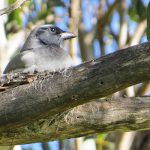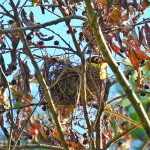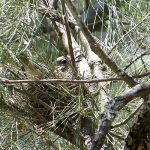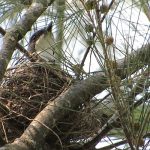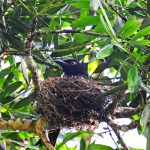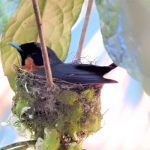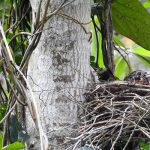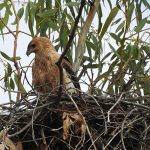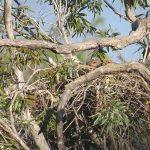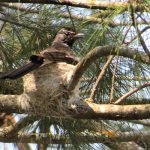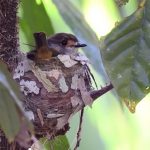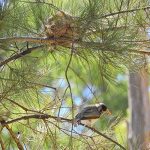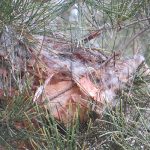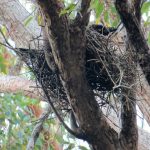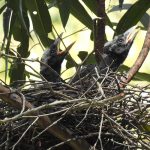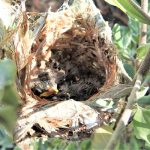CUP NESTS
Nature’s Tiny Architects
In the dappled shade of Eucalypt woodlands and the whispering canopy of rainforest, a delicate engineering marvel rests amongst the branches: the cup nest. Crafted by many Australian birds, these structures are more than just cradles for eggs—they are a testament to ingenuity, adaptation, and the intimate relationship between birds and their environment.
What Is a Cup Nest?
A cup nest is a rounded, bowl-shaped structure, open at the top, meticulously woven from natural materials. They are called “cup nests” because their shape resembles a drinking cup, perfectly contoured to embrace a clutch of eggs and later, downy chicks.
Examples of Bird Species Who Craft Cup Nests
Australian avian life is extraordinarily diverse, and several species showcase their architectural prowess with cup nests:
| Bird Species | Habitat | Typical Nest Height |
|---|---|---|
| Willie Wagtail | Open woodlands, gardens | Low branches |
| Fairy-wren (Superb, Splendid) | Scrublands, grasslands | Close to ground |
| Silvereye | Forest edges, gardens | Medium branches |
| Eastern Yellow Robin | Forests, woodlands | Tree forks |
| Olive-backed Oriole | Rainforest, woodlands | High in canopy |
Construction Materials: Nature’s Toolkit
Australian birds are resourceful, tailoring their nests to the materials at hand:
- Plant fibres: Fine grass, strips of bark, and rootlets create a soft yet sturdy base.
- Spider silk: Some, like the Fairy-wren, use sticky silk to bind materials, lending elasticity and strength.
- Feathers and animal fur: Lining the interior for warmth.
- Lichen, moss, and leaves: Camouflage, helping the nest blend seamlessly with its surrounds.
The Building Process: A Story of Patience and Skill
Imagine a nest being built:
- The bird, nimble and persistent, gathers thread-like grasses and flexible bark.
- It returns, clutching fibres delicately in its beak, weaving them in circles—each loop pulled and pressed, reinforced by sticky silk or mud as an adhesive.
- Between the chirps of distant companions and the gentle sway of branches, the structure takes form—a nest just large enough to house eggs, deep enough to cradle hatchlings safely.
The marvel is in the tactile precision, with every component smoothed down and packed softly, creating a haven from wind, sun, and rain.
Experiencing a Cup Nest
Standing next to a tree that harbours a cup nest, one may notice:
- Sight: The nest is often camouflaged, its outer layer blending with leaves or bark. Up close, it appears tidy and intricate, like a hand-woven bowl.
- Touch (if imagined, not interfered with): The surface is textured, the interior luxuriously soft and warm—an ideal cradle for fragile life.
- Sound: The gentle rustle of a returning bird, the faint peep of hidden chicks.
- Smell: A subtle mix of earthy scent emanates from woven grasses and dried leaves.
The Importance of Cup Nests
Cup nests are marvels of adaptation:
- Positioned high or tucked low depending on predation risks.
- Mostly open, allowing parents to monitor for danger while keeping chicks ventilated in the warm climate.
- Camouflage is key, reducing risk from predators.
Small Nests, Big Lessons
Every cup nest is more than a structure—it’s a reflection of the bird’s survival in a changing landscape. These homes reveal:
- The critical importance of healthy habitats—woodlands, forests, and shrublands—as sources of building materials and safe nesting spots.
- Our role in preserving these environments, ensuring that the next generation of cup-nesters finds a haven for their delicate artistry.
Nature’s Ingenious Design
Cup nests remind us of the intricate, interconnected world within Australian birdlife. Each nest is a blend of necessity and ingenuity—a story of life woven together, thread by thread, in the protective embrace of nature.
To protect Australian birds is to safeguard their extraordinary homes, and in doing so, help these remarkable architects continue their age-old tradition of crafting life anew.

